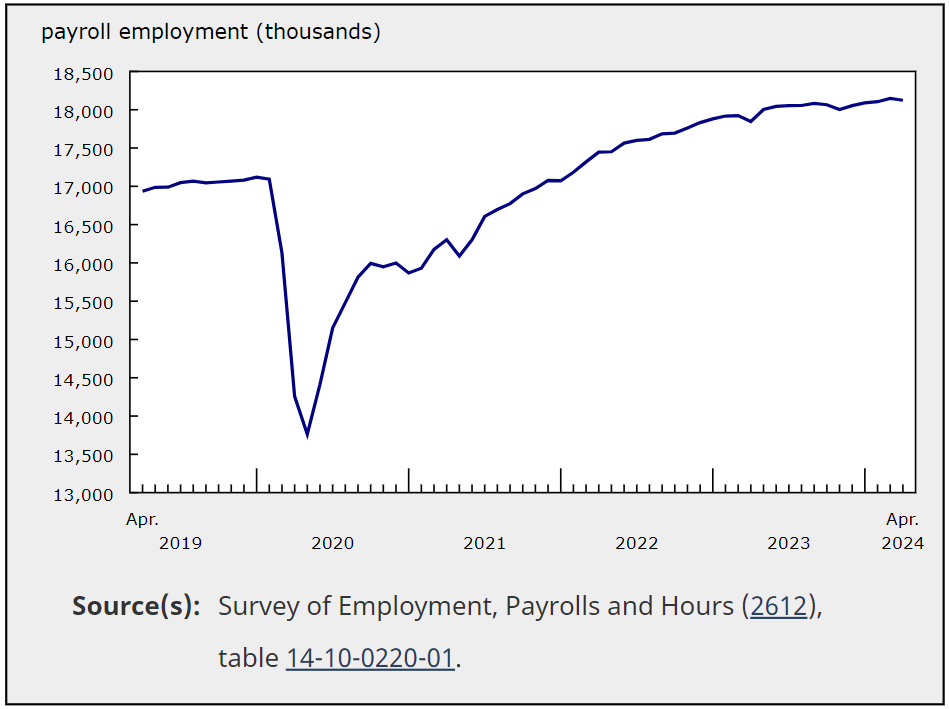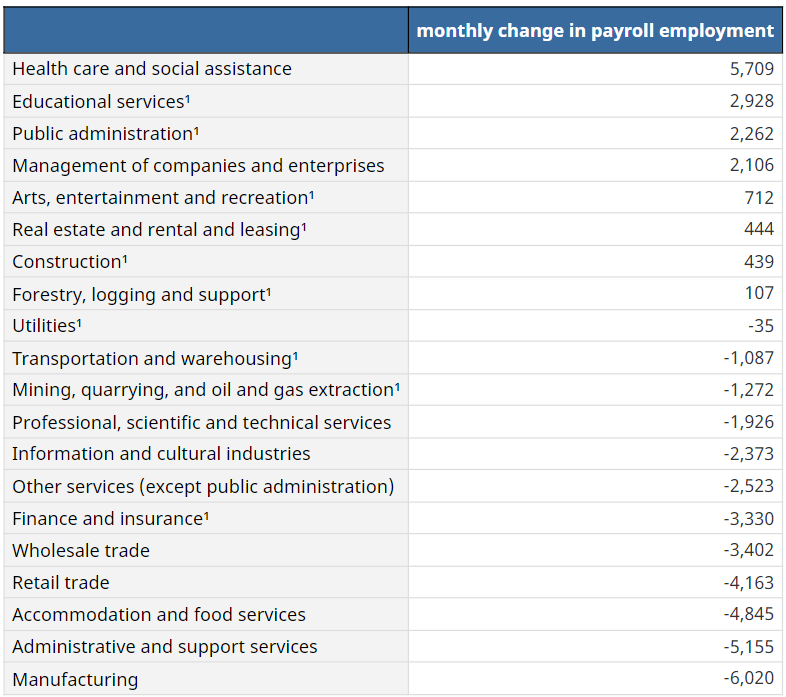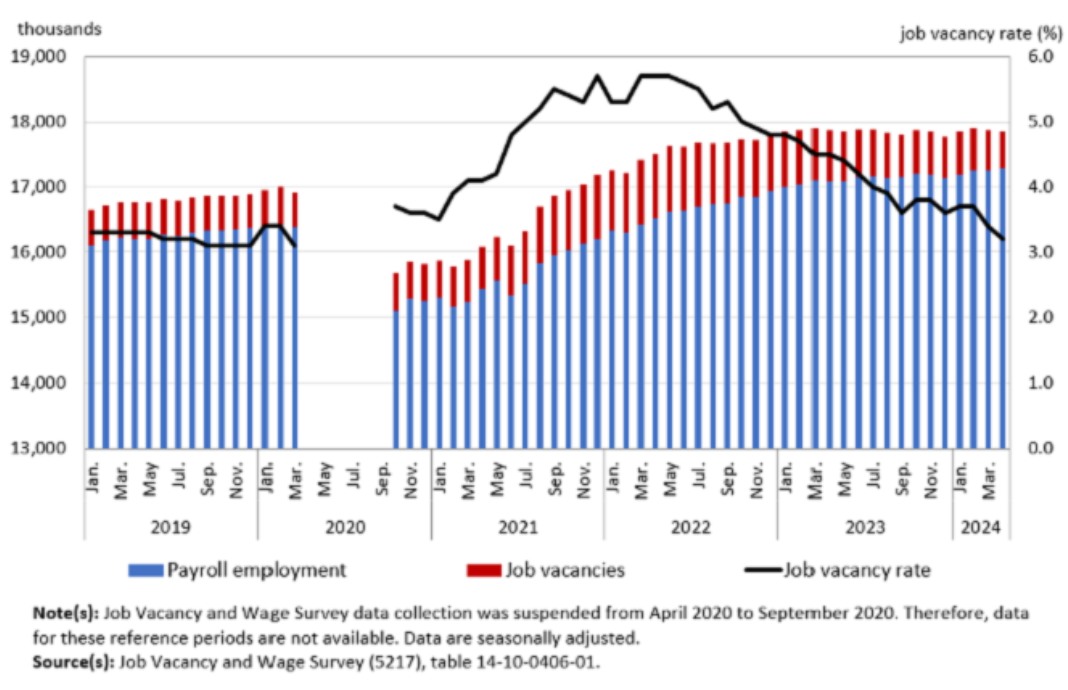
Which sectors recorded the biggest gains in Canada?

The increase in the number of payroll employees in Canada came to a halt in April after three months of growth, according to Statistics Canada (StatCan).
Overall, the number of employees receiving pay and benefits from their employer decreased by 22,700 (-0.1%) in April.
This decline followed three consecutive monthly increases from January to March, with a cumulative gain of 92,500 (+0.5%) over this period, according to the report.

Source: Statistics Canada
More than half (55%) of employers worldwide are planning to increase headcount over the next two years due to the rapidly developing technology, according to a previous ManpowerGroup report.
In April, monthly payroll employment declines were recorded in eight out of 20 sectors, according to StatCan.
Manufacturing; administrative and support, waste management and remediation services; and accommodation and food services recorded the biggest drops in numbers. Meanwhile, health care and social assistance and management of companies and enterprises had the biggest gains in payroll employment numbers that month.

Source: Statistics Canada
Meanwhile, job vacancies fell by 32,000 (-5.3%) to 575,400 in April, marking the third consecutive monthly decline, according to StatCan.
“This was the lowest number of job vacancies since January 2021 (561,300). Compared with April 2023, job vacancies were down by 223,400 (-28.0%) in April 2024,” StatCan said.

Source: Statistics Canada
The job vacancy rate also decreased 0.2 percentage points to 3.2% in April compared with March. It was 1.3 percentage points lower than in April 2023 (4.5%).
There were 2.3 unemployed persons for every job vacancy in April 2024, up from 2.2 in March.
This increase in the unemployment-to-job vacancy ratio in April was largely due to fewer job vacancies (-32,000; -5.3%), as the number of unemployed persons (from the Labour Force Survey) was little changed in April, said StatCan.
Job vacancies decreased in seven sectors in April:
Job postings related to summer employment dropped this year compared to the past two years, according to Indeed.
Also, the average weekly earnings were up 3.7% (to $1,240) in April year-over-year following a 4.1% increase in March.
“In general, growth in average weekly earnings can reflect a range of factors, including changes in wages, composition of employment, hours worked, and base-year effects. Month over month, average weekly earnings were little changed for a third consecutive month in April,” said StatCan.
Average weekly hours stood at 33.5 hours in April, unchanged from the previous month but up 0.9% on a year-over-year basis.